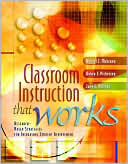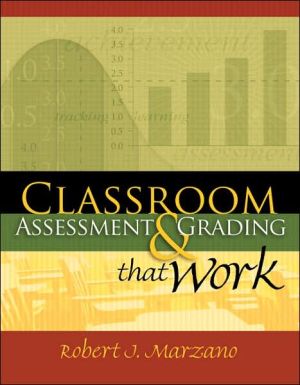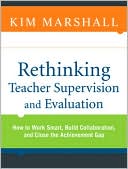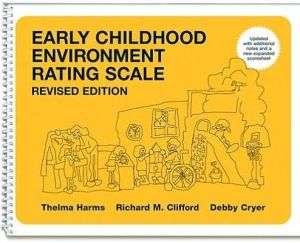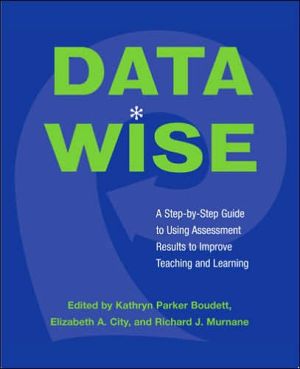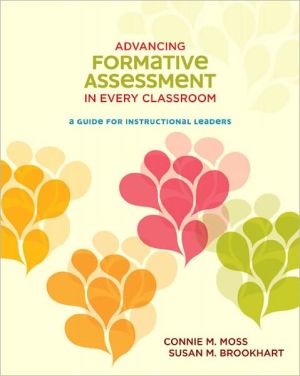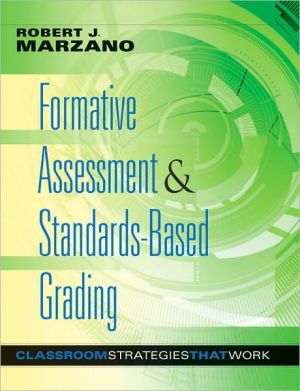Understanding and Evaluating Educational Research
For courses in Research Methods in Education. \ Understanding and Evaluating Research, fourth edition, is a market leading textbook appropriate for all courses in educational research. A reader, this text contains quantitative and qualitative educational research articles from a variety of professional journals. With each article is a sample article analysis and exercises that help students become better consumers of research. The fourth edition is greatly enhanced by the inclusion of new...
Search in google:
For courses in Research Methods in Education.Understanding and Evaluating Research, third edition, is a supplemental textbook appropriate for all courses in educational research. A reader, this text contains quantitative and qualitative educational research articles from a variety of professional journals. With each article is a sample article analysis and exercises that help students become better consumers of research. The third edition is greatly enhanced by the inclusion of a new chapter on “Mixed Method Designs” and two mixed-method studies, revised and expanded discussion of qualitative methods, more emphasis given to randomized designs, revision of research typology, and features eight new articles.
Organization\ The purpose of this book is to help students become better and more informed consumers of published educational research studies. Many students' only direct exposure to research methods will be in introductory research classes or classes that include a research component. Many students will approach the content with dread or, at best, resignation. "Why should I have to learn about research methods if I'm never going to do this kind of work myself?" they ask. Our response is simple. Practicing professionals, whether teachers, principals, or counselors, need to be able to read, understand, and evaluate research studies. They need to approach research data with a critical eye—to discriminate sound arguments from specious ones, to discern appropriate uses of statistics from those meant to mislead or obfuscate. As professionals they should not have to depend on others' assessments of the credibility or usefulness of research; they should be able to read, critique, and evaluate research information themselves.\ This book provides students with a systematic approach for first identifying whether an article or report should be considered "research," then understanding the type of research, and, finally, utilizing criteria by which studies of each type should be judged. This approach is illustrated with published articles from various journals. With each article we include questions that will help students learn how to apply appropriate criteria, both for the case at hand and for other studies of its type, and provide answers to illustrate the thinking of informed consumers. By the end of the book we hope that students will have developed a way ofthinking about published research and a greater sense of confidence in their ability to read it profitably.\ Understanding and Evaluating Educational Research is not meant to supplant the main text for an introductory research class, but rather to serve as a supplement to it, especially in classes where a major focus is on understanding research. Research articles have been organized to be consistent with the methodological classification found in most introductory research texts. The writing uses nontechnical language for the research novice. Important terms and concepts are boldfaced. Organization\ The organization of the second edition remains unchanged. In the first chapter we lay out our typology, suggest how the reader might use it to classify research studies, and present criteria by which all educational research should be judged. Succeeding chapters present the research types one at a time, describe their peculiar characteristics, and present criteria by which each type ought to be evaluated. In the final chapter we discuss action-oriented research and practitioner research studies that transcend the categories. New to This Edition\ The second edition includes the following enhancements:\ \ The number of articles has been increased to 14\ Analytical research methods are now included\ Discussion of qualitative methods and designs has been expanded\ Descriptive quantitative nonexperimental designs are now included\ Greater emphasis is placed on graphic presentations of data\ A Credibility Scorecard is included for each article\ \ Our criteria for selecting the published articles included the following:\ \ Publication date. Most articles have been published within the past five years.\ Topic. The articles represent the diversity of topics found in education (e.g., educational administration, counseling, special education, curriculum, adult education, early childhood education).\ Relevance. The articles are interesting, relevant, and useful.\ Level of difficulty. The articles range from easily understood to moderate levels of difficulty.\ Journals. The articles come from a wide variety of journals.\ \ Acknowledgments \ We are most appreciative of the support and expertise of the Merrill/Prentice Hall staff in preparing and publishing this book. We are also grateful to our students who have provided helpful suggestions on the choice of articles, on the introductory sections to each chapter, and on changes made to the second edition. We also wish to thank our reviewers: John Bonfadini, George Mason University; Joe Cornett, Texas Tech University; Karen Ford, Ball State University; Michael Gardner, University of Utah; Andrea Guillaume, California State University, Fullerton; Joseph Maxwell, George Mason University; Carmen Montecinos, Northern Iowa; Tamara B. Murdock, University of Missouri; and Karen Westburg, University of Connecticut.
Ch. 1Introduction to Reading Educational Research1Ch. 2Quantitative Nonexperimental Designs13ArticlesDiffering Opinions on Testing between Preservice and Inservice Teachers16The Impact of Alternate Assessments: A Statewide Teacher Survey26Classroom Teachers' and Music Specialists' Perceived Ability to Implement the National Standards for Music Education41Relationship between Parents, Peers, Morality, and Theft in an Adolescent Sample52College Success of Students from Three High School Settings65Ch. 3Quantitative Experimental Designs79ArticlesMotivational Effects on Test Scores of Elementary Students82Effects of a Children's Book and a Traditional Textbook on Fifth-Grade Students' Achievement and Attitudes toward Social Studies90Effects of Cooperative Learning among Hispanic Students in Elementary Social Studies100Grade Distributions, Grading Procedures, and Students' Evaluations of Instructors: A Justice Perspective110Ch. 4Qualitative Designs119ArticlesBuilding Bridges to Student Engagement: Communicating Respect and Care for Students in Urban High Schools124Rites of Passage among Women Reentering Higher Education139How Does the Textbook Contribute to Learning in a Middle School Science Class?154Ch. 5Action/Practitioner Research173ArticlesEffects of Curriculum Alignment versus Direct Instruction on Urban Children175Improving the Grades of Student Athletes: A Study of Attitudes, Expectations, and Academic Performance184Index201

